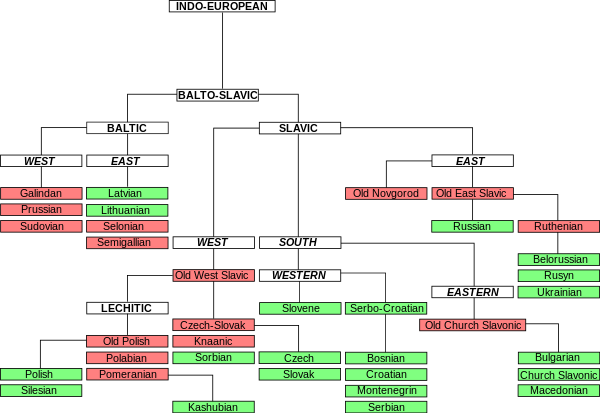バルト・スラヴ語 派
この
|
| バルト・スラヴ | |
|---|---|
インド・ヨーロッパ
| |

バルト・スラヴ
バルト・スラヴ
脚注
[- ^ “Balto-Slavic languages. Encyclopædia Britannica. Encyclopædia Britannica Online”. Encyclopædia Britannica Inc.. 2015
年 6月 閲覧 。 エラー:閲覧 日 は年 ・月 ・日 のすべてを記入 してください。 “Those scholars who accept the Balto-Slavic hypothesis attribute the large number of close similarities in the vocabulary, grammar, and sound systems of the Baltic and Slavic languages to development from a common ancestral language after the breakup of Proto-Indo-European. Those scholars who reject the hypothesis believe that the similarities are the result of parallel development and of mutual influence during a long period of contact.” - ^ Fortson (2010:414)
- ^ Gray, R.D.; Atkinson, Q.D. (2003), “Language-tree divergence times support the Anatolian theory of Indo-European origin”, Nature 426: 435–9
- ^ Kortlandt, Frederik (2009), Baltica & Balto-Slavica, p. 5, "Though Prussian is undoubtedly closer to the East Baltic languages than to Slavic, the characteristic features of the Baltic languages seem to be either retentions or results of parallel development and cultural interaction. Thus I assume that Balto-Slavic split into three identifiable branches, each of which followed its own course of development."
- ^ Derksen, Rick (2008), Etymological Dictionary of the Slavic Inherited Lexicon, p. 20, ""I am not convinced that it is justified to reconstruct a Proto-Baltic stage. The term Proto-Baltic is used for convenience’s sake."
- ^ Young (2006)

